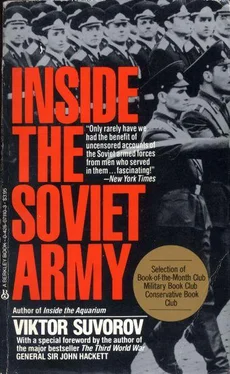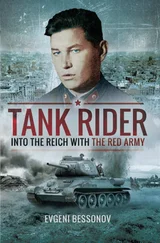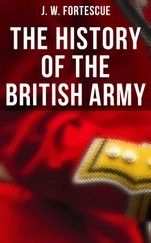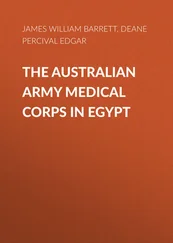1
Until the mid-1950s, divisions were organised in corps, and a number of corps made up an Army. However, because of the greatly increased combat strength of the divisions, and also because an Army Commander had acquired the means to control all his divisions simultaneously, the corps came to be considered unnecessary as an intermediate formation and was therefore abolished.
Today, however, a relatively small number of corps are left in the Soviet armed forces. They exist where a division is too small a unit for the task in hand and an Army too large.
From time to time in this book we have used the term `All-Arms Army'. This has been done in order to distinguish this type of Army from Tank Armies, Air Armies, Air Defence Armies and Rocket Armies. However, in normal usage the expression `all-arms' is not used; instead, the units concerned are simply referred to as the 13th or the 69th Army. Some have honorary titles, such as `2nd Shock Army' or `9th Guards Army'. These titles add nothing to the present-day strength of these armies-they are simply reflections of past glory. For instance, the 3rd Army, which has no honorary title, is considerably better equipped than the 11th Guards Army.
Sometimes Armies evolve along new lines but keep their former designations, which do not fit their present functions. Thus, the 2nd Tank Army is now an All-Arms Army. By contrast, the 3rd Shock Army, despite its designation, is in fact a Tank Army.
During the Second World War the Red Army had a total of 18 Air Armies, 11 Air Defence Armies, 6 Guards Tank Armies, and 70 other armies, of which 5 were known as Shock Armies and 11 as Guards Armies.
Today there are fewer armies but their strengths vary considerably. The Soviet Armed Forces now have 3 Rocket Armies, 10 Air Defence Armies, 16 Air Armies, 8 Guards Tank Armies and 33 other armies, a number of which are still referred to as either Shock or Guards Armies.
2
In the West it is firmly believed that today's Soviet Armies lack a clear organisational structure. A superficial analysis of the complement of each of the Soviet Armies seems to confirm this: some Armies have 7 divisions while others have only 3. The proportion of tank and motor-rifle divisions which they contain also varies constantly.
In fact, though, Armies do have quite clear organisational structures. However, the Soviet Union does not think it advisable to display this clarity in peacetime; this would throw too much light on their plans for war. Divisions have a high degree of administrative autonomy and can be quickly regrouped from one Army to another. In peacetime the system certainly does seem illogical, but once a war began each Army would take on an entirely clear shape.
There is one further cause for this apparent confusion. This is that the Soviet Union has forbidden its East European allies to establish Armies in either peacetime or wartime. If a homogeneous mass becomes too large it may explode. The Soviet High Command avoids this danger within the Soviet Army itself, by constantly moving the various nationalities around, to produce a featureless grey mass of soldiery, unable to understand one another. In peacetime, the armed forces of the East European countries only have divisions. In wartime these divisions would immediately join Soviet Armies which were under strength. This is precisely what happened in the summer of 1968.
In peacetime, these East European divisions see themselves as part of their own national armed forces. In wartime they would be distributed throughout the Soviet Armies; for administrative purposes they would come under their national Ministries of Defence and, ultimately, under the Commander-in-Chief of the Warsaw Treaty Organisation. For military purposes they would be subordinated to the Soviet Armies, Fronts and Strategic Directions and, ultimately, to the Soviet Supreme Commander and to his General Staff. It is because of this that the Staff of the Warsaw Treaty Organisation is a bureaucratic institution rather than operational headquarters. And this is why, in peacetime, many Soviet Armies appear unstructured. In wartime they would be brought up to strength with East European contingents and they would then assume their proper forms.
3
In wartime an Army consists of five divisions, one of which is a tank division, and the remaining four motor-rifle divisions. In various instances in which the mass use of tanks would be difficult, an Army may have nothing but motor-rifle divisions, which have only a limited number of tanks. But the Armies which are earmarked to operate in Western Europe are made up in this way-one tank and four motor-rifle divisions.
Besides these five divisions each Army has:
A headquarters staff-the brain of the Army.
A communications regiment-its nervous system.
An independent SPETSNAZ diversionary company and two signals intelligence battalions-its eyes and ears.
A rocket brigade-the most powerful weapon in the hands of the Army's commander, which enables him to deliver nuclear and chemical attacks. Earlier each brigade had 9 launchers, with a range of up to 300 kilometres. Today a brigade has 18 launchers, with a greatly increased range.
An independent tank battalion-the Army Commander's personal guard. This defends the Army's control post and the rocket brigade and is brought into action only in the most critical situations, when everything is at stake.
An artillery brigade-the main fire-power of the Army. This consists of five battalions-three with 18 130mm guns each, one with 18 152 mm gun-howitzers and one with 18 BM-27 multiple rocket launchers.
An anti-aircraft brigade, which covers the Army's command Post and Rocket Brigades with its fire and which also operates in the Army's main axis of advance, supplementing the anti-aircraft coverage which the divisions can provide for themselves. This brigade consists of a command battalion, a supply battalion and three fire-battalions, each with three batteries.
The camouflage service has decreed that one of the launchers in each of these batteries is never to show itself. It therefore appears to observers that these batteries consist of three launchers, whereas in fact they have four, one of which is always kept in reserve. An anti-aircraft brigade is therefore generally believed to have 27 launchers, whereas in fact it has 36.
An anti-aircraft regiment, which has 30 57mm S-60 anti-aircraft guns. Experience in Vietnam and in wars in the Middle East has shown that conventional anti-aircraft artillery has by no means outlived its usefulness and that there are many situations in which the effectiveness of anti-aircraft rockets falls off sharply and that anti-aircraft guns can supplement these most usefully.
An anti-tank regiment, which consists of three battalions. This has 57 heavy anti-tank guns and 18 anti-tank missile complexes.
An independent anti-tank battalion, which has 40 IT-1 tracked anti-tank rocket launchers. The existence of these battalions, and of the IT-1 itself, is a carefully guarded secret. These batteries do not form part of the anti-tank regiment, and there is a sound reason for this, since they carry out operations using quite different tactics. The independent anti-tank battalions, with their highly mobile launchers, harass the enemy constantly, making surprise attacks from vehicles and manoeuvring from area to area under the pressure exerted by the enemy's superior forces. Meanwhile the anti-tank regiment, armed with more powerful but less manoeuvrable guns, has the task of stopping the enemy tanks, at absolutely any cost, when they reach a previously defined line. Thus the more mobile battalion goes into action against the enemy's tanks from the momient the latter break through, while the anti-tank regiment, deep in the rear, is preparing an impassable barrier, behind which it will fight to the last man.
Читать дальше












